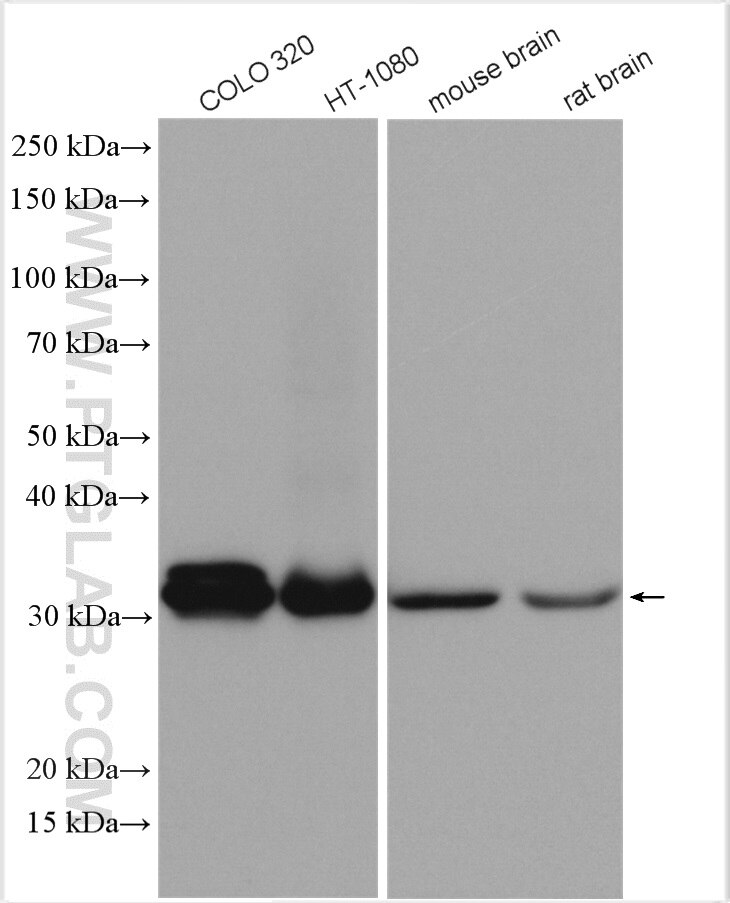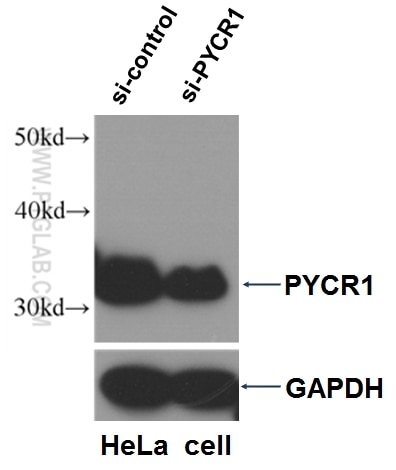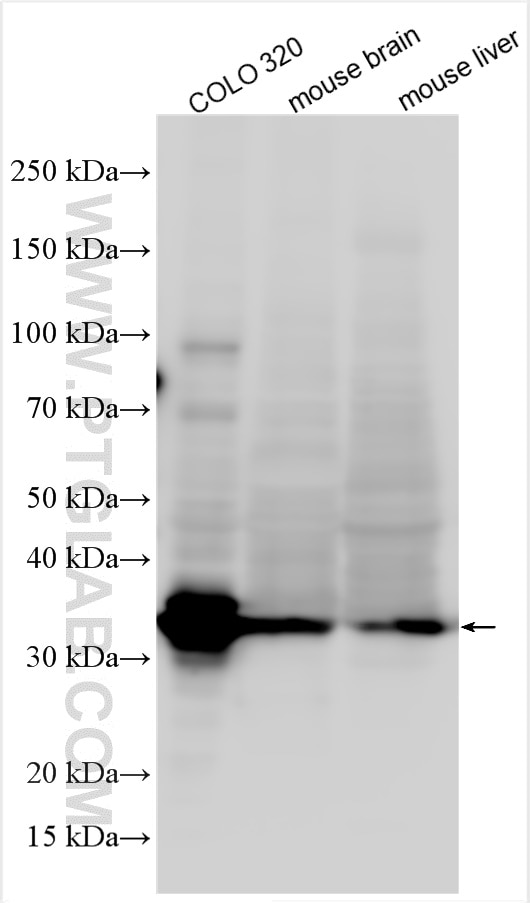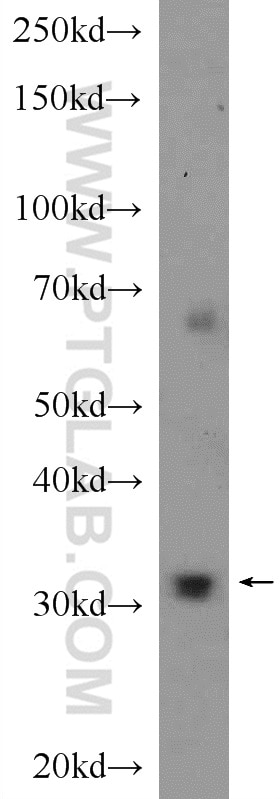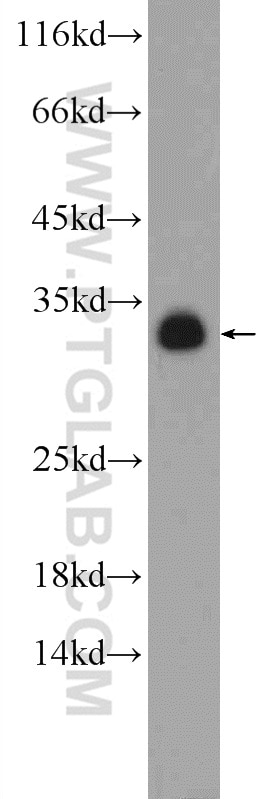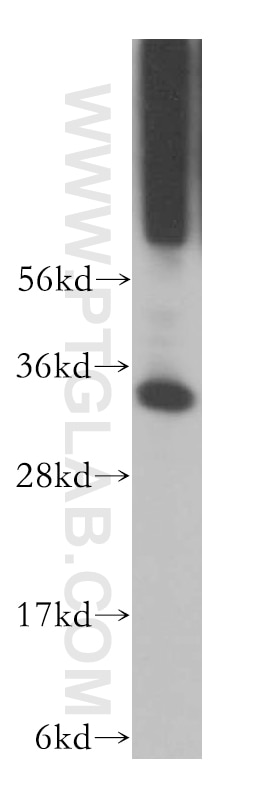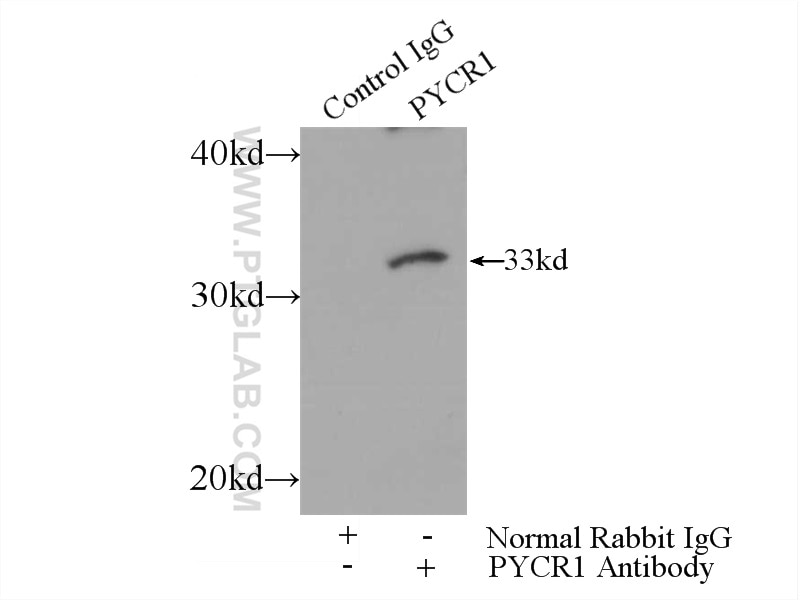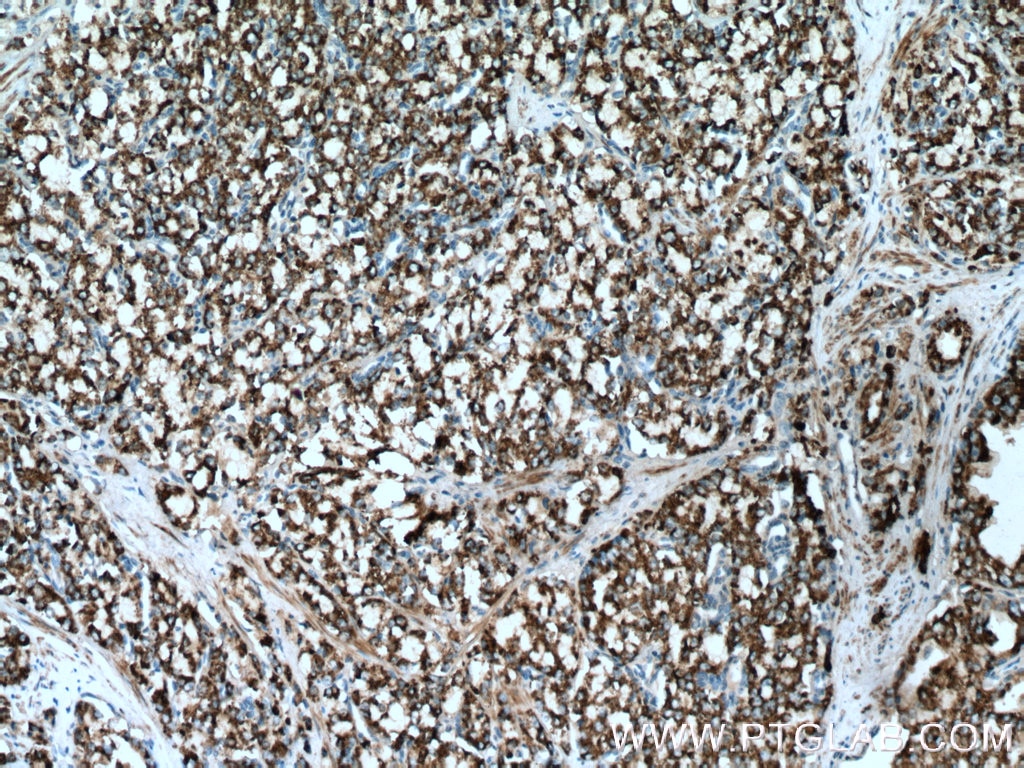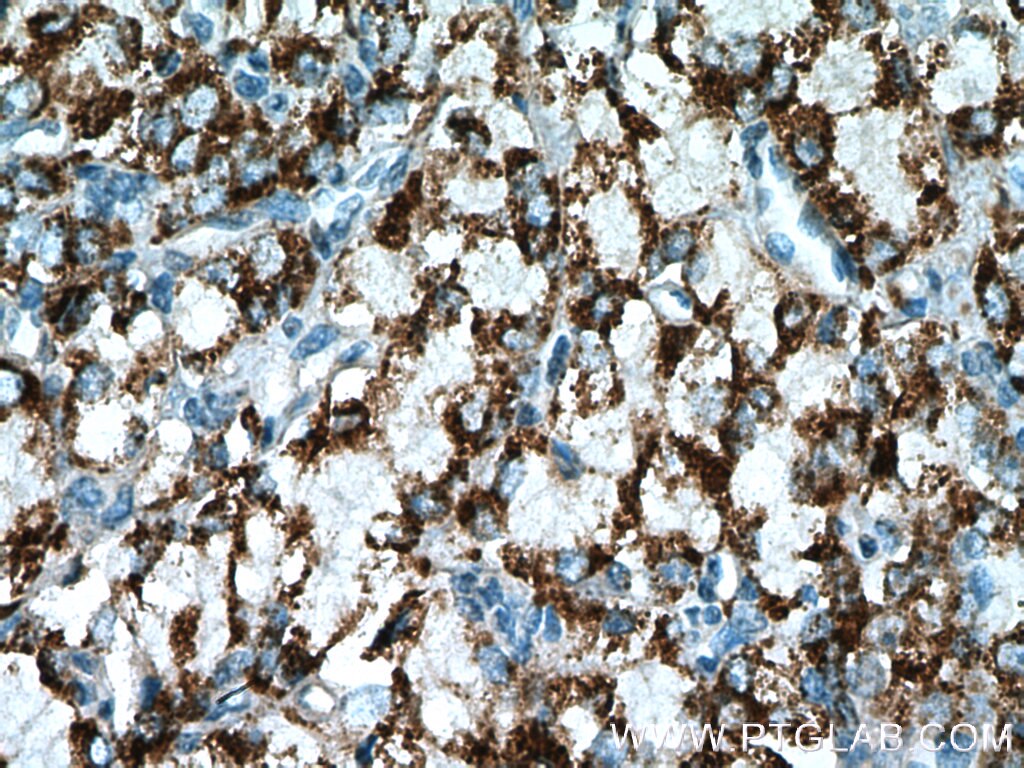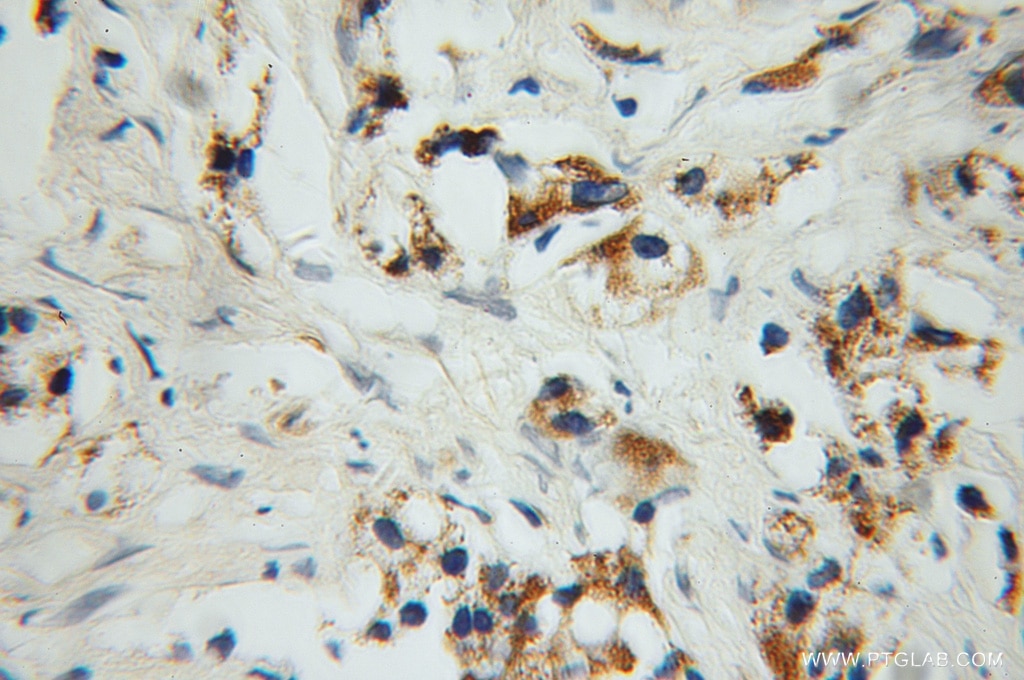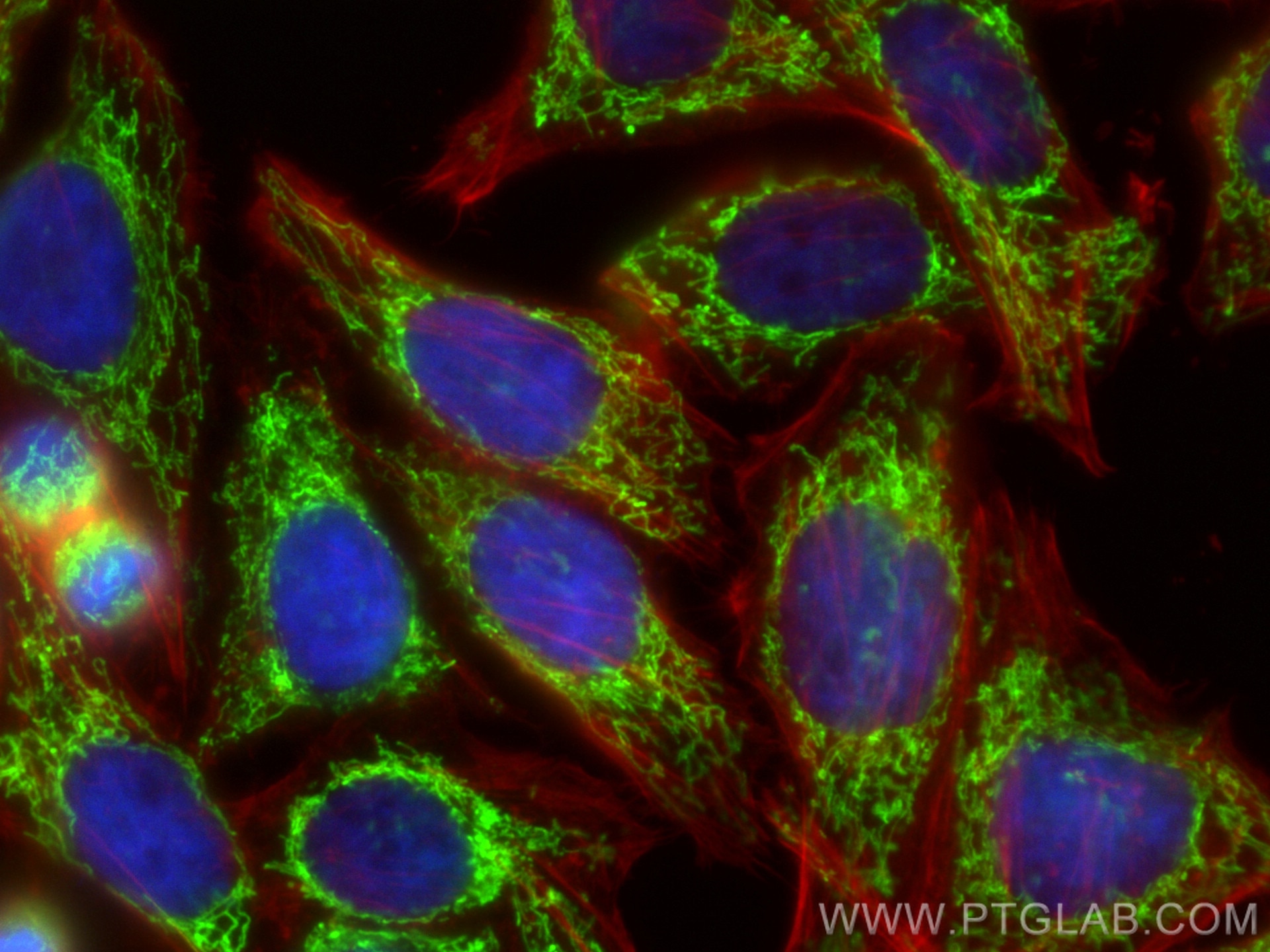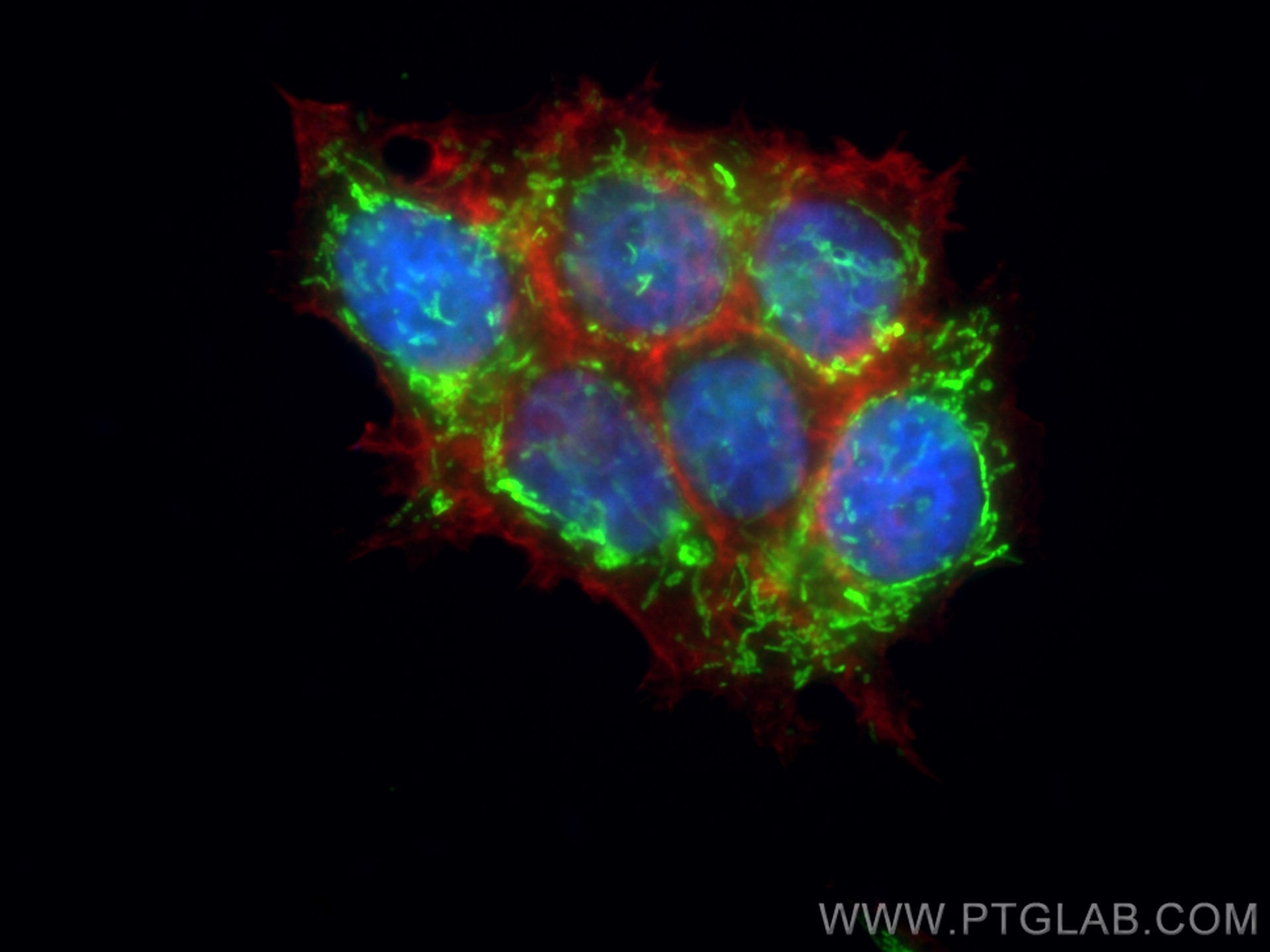- Featured Product
- KD/KO Validated
PYCR1 Polyklonaler Antikörper
PYCR1 Polyklonal Antikörper für WB, IHC, IF/ICC, IP, ELISA
Wirt / Isotyp
Kaninchen / IgG
Getestete Reaktivität
human, Maus, Ratte und mehr (1)
Anwendung
WB, IHC, IF/ICC, IP, CoIP, ELISA
Konjugation
Unkonjugiert
Kat-Nr. : 13108-1-AP
Synonyme
Geprüfte Anwendungen
| Erfolgreiche Detektion in WB | COLO 320-Zellen, HeLa-Zellen, HT-1080.Zellen, humanes Hirngewebe, Maushirngewebe, Mausembryogewebe, Mauslebergewebe, NIH/3T3-Zellen, Rattenhirngewebe |
| Erfolgreiche IP | Maushirngewebe |
| Erfolgreiche Detektion in IHC | humanes Prostatakarzinomgewebe Hinweis: Antigendemaskierung mit TE-Puffer pH 9,0 empfohlen. (*) Wahlweise kann die Antigendemaskierung auch mit Citratpuffer pH 6,0 erfolgen. |
| Erfolgreiche Detektion in IF/ICC | HepG2-Zellen, MCF-7-Zellen |
Empfohlene Verdünnung
| Anwendung | Verdünnung |
|---|---|
| Western Blot (WB) | WB : 1:1000-1:4000 |
| Immunpräzipitation (IP) | IP : 0.5-4.0 ug for 1.0-3.0 mg of total protein lysate |
| Immunhistochemie (IHC) | IHC : 1:100-1:400 |
| Immunfluoreszenz (IF)/ICC | IF/ICC : 1:200-1:800 |
| It is recommended that this reagent should be titrated in each testing system to obtain optimal results. | |
| Sample-dependent, check data in validation data gallery | |
Veröffentlichte Anwendungen
| KD/KO | See 12 publications below |
| WB | See 49 publications below |
| IHC | See 12 publications below |
| IF | See 12 publications below |
| IP | See 7 publications below |
| CoIP | See 1 publications below |
Produktinformation
13108-1-AP bindet in WB, IHC, IF/ICC, IP, CoIP, ELISA PYCR1 und zeigt Reaktivität mit human, Maus, Ratten
| Getestete Reaktivität | human, Maus, Ratte |
| In Publikationen genannte Reaktivität | human, Maus, Zebrafisch |
| Wirt / Isotyp | Kaninchen / IgG |
| Klonalität | Polyklonal |
| Typ | Antikörper |
| Immunogen | PYCR1 fusion protein Ag3764 |
| Vollständiger Name | pyrroline-5-carboxylate reductase 1 |
| Berechnetes Molekulargewicht | 319 aa, 33.8 kDa |
| Beobachtetes Molekulargewicht | 33 kDa, 35 kDa |
| GenBank-Zugangsnummer | BC022244 |
| Gene symbol | PYCR1 |
| Gene ID (NCBI) | 5831 |
| Konjugation | Unkonjugiert |
| Form | Liquid |
| Reinigungsmethode | Antigen-Affinitätsreinigung |
| Lagerungspuffer | PBS with 0.02% sodium azide and 50% glycerol |
| Lagerungsbedingungen | Bei -20°C lagern. Nach dem Versand ein Jahr lang stabil Aliquotieren ist bei -20oC Lagerung nicht notwendig. 20ul Größen enthalten 0,1% BSA. |
Hintergrundinformationen
PYCR1,also named as P5CR1, belongs to the pyrroline-5-carboxylate reductase family. It is a housekeeping enzyme that catalyzes the last step in proline biosynthesis. PYCR1 can utilize both NAD and NADP, but has higher affinity for NAD. It is involved in the cellular response to oxidative stress. Mutation in PYCR1 will cause ARCL type II(ARCL2B ). Some mutation will cause DeBarsy syndrome (DBS) which is characterized by progeroid features, ophthalmological abnormalities, intrauterine growth retardation, and cutis laxa. The MW of PYCR1 is about 33-35 kDa. PYCR1 has 3 isoforms produced by alternative splicing. This antibody may have cross reaction to PYCR2 due to the high homology.
Protokolle
| PRODUKTSPEZIFISCHE PROTOKOLLE | |
|---|---|
| WB protocol for PYCR1 antibody 13108-1-AP | Protokoll herunterladen |
| IHC protocol for PYCR1 antibody 13108-1-AP | Protokoll herunterladenl |
| IF protocol for PYCR1 antibody 13108-1-AP | Protokoll herunterladen |
| IP protocol for PYCR1 antibody 13108-1-AP | Protokoll herunterladen |
| STANDARD-PROTOKOLLE | |
|---|---|
| Klicken Sie hier, um unsere Standardprotokolle anzuzeigen |
Publikationen
| Species | Application | Title |
|---|---|---|
Nature Tumour-specific proline vulnerability uncovered by differential ribosome codon reading.
| ||
Nature Functional genomics reveal that the serine synthesis pathway is essential in breast cancer. | ||
J Hepatol Metabolic pathway analyses identify proline biosynthesis pathway as a promoter of liver tumorigenesis. | ||
Neuron Loss of PYCR2 Causes Neurodegeneration by Increasing Cerebral Glycine Levels via SHMT2. |
Rezensionen
The reviews below have been submitted by verified Proteintech customers who received an incentive for providing their feedback.
FH Hyeonju (Verified Customer) (05-13-2024) | Too many non-specific bands are captured. ? I'm curious what the band is under pycr1 in lanes 6-9. Can you send me information about other proteins that react with the pycr1 antibody(if you have information about this)
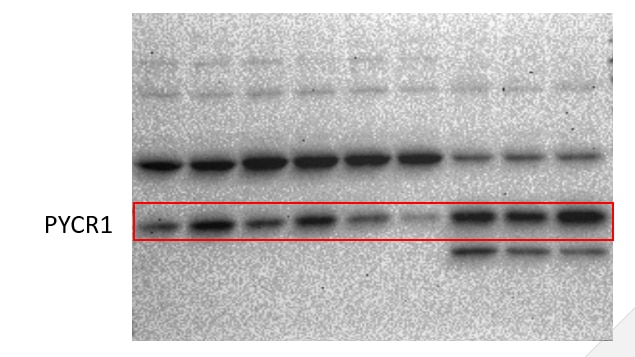 |
FH Daniel (Verified Customer) (02-05-2020) | The antibody stained the glomerulus of the mouse kidney.
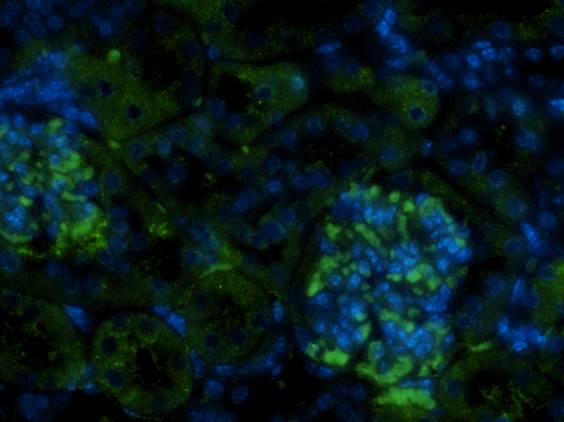 |
